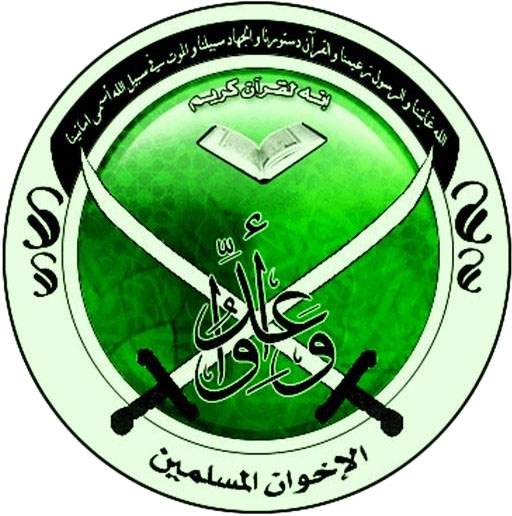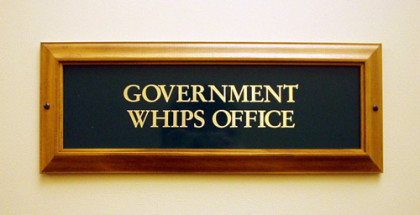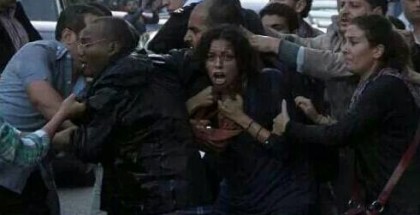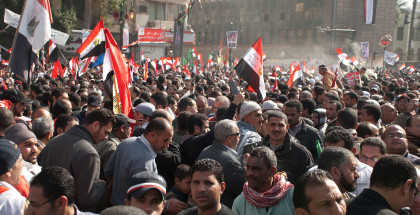The Muslim Brotherhood at a Glance
July 8, 2013 | Nadine El SayedWe are seeing atrocities carried out by the hands of those who claim to represent the law and religion of God. Ranging from death threats to protestors to violent shows of power and militias, you probably all know by now the present bloody side of the Muslim Brotherhood.
But in case we forgot, in case we forgave, this is a very quick glance at the glorious history of a blood-stained group.
Brotherhood at a Glance:
1928:
Supreme Guide and Imam Hassan El Banna founds the group with the main dogma being a call for an Islamic caliphate that disregards nationalism and patriotism in favor for the come back of the Islamic Umma. Banna calls for a gradual change through infiltrating society from the bottom up followed by training and mobilization of its members to prepare them for the final stage of full transformation into an Islamic state.
The Brotherhood “will use practical force whenever there is no other way and whenever they are sure the implementation of faith and unity is ready,” El Banna was often quoted.
1948:
– The group’s secret military wing was formed.
– Members of the group assassinate judge Ahmed Khazendar to retaliate for his sentence against their members.
– Abdel Meguid Ahmed Hassan, a member of the Brotherhood, assassinates Prime Minister Mohamed Al Nukrashi Pasha.
1949:
The group attempts the bombing of a court of cassation that was filled with men, women and children, in an attempt to get rid of documents that prove the group’s conviction of Nukrashi’s assassination.
1954:
– The Brotherhood attacks members of the Liberation Rally (formed by late President Gamal Abdel Nasser in that year to replace all other political parties on the scene) with batons, bombs and burning cars.
– They carry out the first failed attempt to assassinate Nasser while he was giving a speech on Mansheya Square in Alexandria.
Leading Brotherhood member Sayyid Qutb publishes his notorious book, Milestones, which deemed the Egyptian society pagan and called for action against the society, using violence if necessary. The Brotherhood officially denies any ties with the book — which was the doctrine to the various terrorist Islamist groups that splintered off the Brotherhood, including Al Jamaa Al Islamiya — various former members and politicians have presented documents to prove that the Supreme Guide of the group approved the book before publishing. It is important to note that allegiance to the guiding office and the Supreme Guide of the group is a necessary step for any member of the Brotherhood and Qotb was a leading member in the 1950s and the 1960s, which leads many to argue the book and ideology couldn’t have possibly been voiced without the group’s consent.
1965:
The group carries out the second assassination attempt on Nasser, as per former Brotherhood member Zeinag EL Ghazaly who claims the Supreme Guide had personally approved the assassination and assigned the violent Islamist thinker Sayyid Qutb for the task.
Failed assassination attempts on singers: Om Kolthoum, Mohamed Abdel Wahab, Abdel Halim Hafez and Shadia.
1970s:
The Brotherhood renounces violence and splinter groups, including Al Gama’a Al Islamiya and the Egyptian Islamic Jihad, form. The splinter groups that formed off the Brotherhood in universities were responsible for the assassination and assassination attempts of various figures, including late President Anwar El Sadat in 1981 and Farag Fouda in 1994 and the attempt on Naguib Mahfouz’s life in 1992. Although several leading members of these groups were former members of the Brotherhood and had split after it renounced violence, the Brotherhood officially denies any ties with these groups. Tarek and Aboud Al Zommor, both were imprisoned in the Sadat assassination, became close ties to the regime following their release in 2011 and were invited to the October Sixth war celebrations in 2012.
2006:
– The Supreme Guide Mahdy Akef tells a reporter from Rose Al Yussuf newspaper “?? ?? ???.. ???? ???.. ????? ?? ???“ (Egypt can go to hell) and says he would rather a Muslim foreigner rules Egypt than an Egyptian Christian.
January 2011:
– The Brotherhood officially announces they will not be part of the January 25th protests and renounced any actions that might affect the unity of the country.
– On January 26th, leading member Essam El Erian assures the Interior Ministry that the Brotherhood did not participate in the protests of January 25th and denies allegations for the Interior Ministry that they were any part of it.
– Later on, they announce they would only take 30% of the Parliamentary seats in the elections but retract their statement later in March.
2012:
– The group announces they will not nominate a presidential candidate.
– In December, 2012, leading member Safwat Hegazy threatens former President Mohamed Morsi opposers during the Media City sit-in saying; “????? ???? ???? ?????? ???????” (necks will fly and if we say it then we will do it).
2013:
– In June 2013 Hegazy says “??? ??? ???? ?????? ???? ????? ” (we will throw blood at anyone who throws water at Morsi).
– Later in June, a court confirms Hamas movement’s involvement in participation with the Brotherhood in the attack on prisons to free its key members and members of the Brotherhood in the aftermath of the January 25th events.
– In July 2013 Hegazy threatens to break into the Presidential Guards headquarters to free Morsi and threatens of very serious escalation.
And the atrocities committed by some of its leading members in the name of religion and Islam continue.





















Submit a Comment